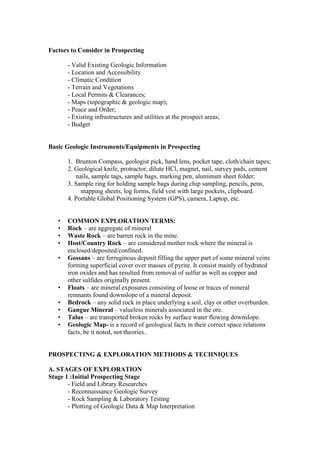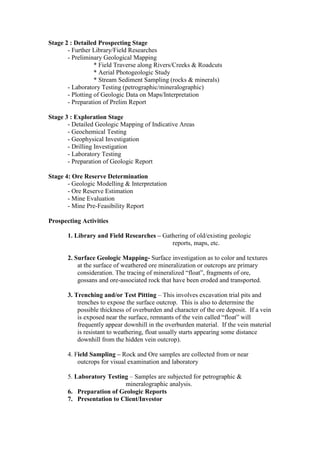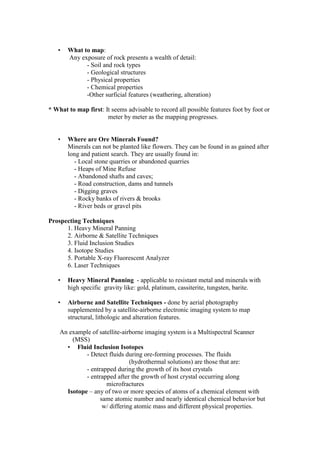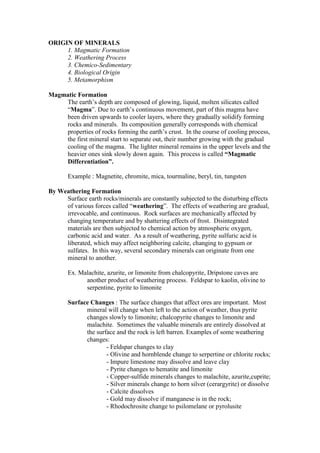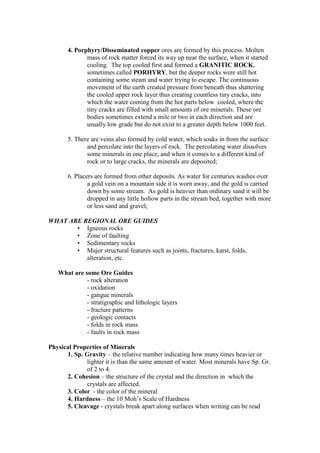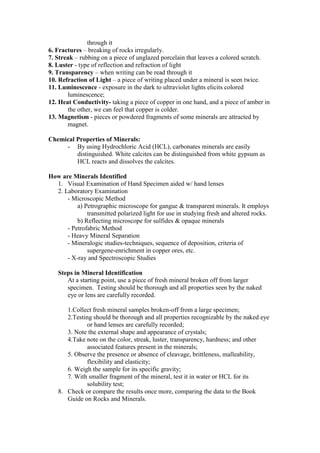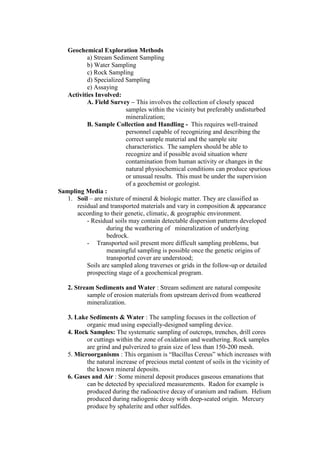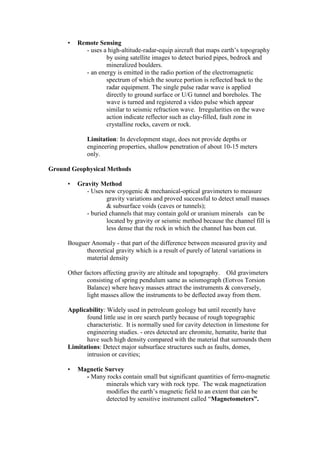Mineral prospecting and exploration involves searching for mineral deposits through various stages and techniques. It begins with initial prospecting through field research, mapping, and sampling. If results are promising, more detailed exploration is conducted including additional mapping, geochemical testing, geophysical surveys, and drilling. The goal is to accurately define mineral deposits and determine their economic potential to guide decisions on mineral extraction. Prospecting requires qualified individuals with geological and engineering backgrounds who can perform tasks like mapping, sampling, and using exploration equipment in various terrains and conditions.

